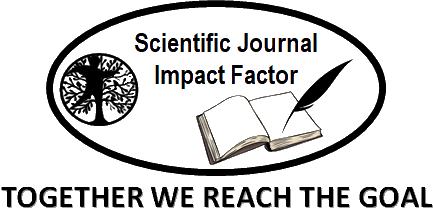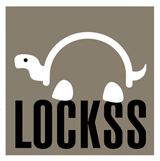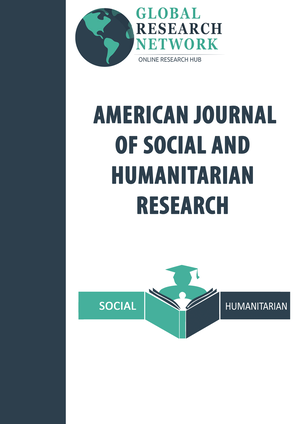Development of Interactive Multimedia in Social Studies Learning to Improve Students' Digital Literacy Skills at SMP Negeri 17 Tulang Bawang Barat
Abstract
This research and development (R&D) study aimed to create an Android-based interactive learning multimedia to improve digital literacy skills at the junior high school level, specifically within Social Studies learning at SMP Negeri 17 Tulang Bawang Barat. The methodology for this study adhered to the ADDIE model, which systematically guides the process through five distinct stages: Analysis, Design, Development, Implementation, and Evaluation.. The process involved validating the product with experts before testing it with users. The validity and effectiveness were measured using a questionnaire with a Likert scale, analyzed through both qualitative and quantitative methods, including inferential statistical tests. The multimedia was deemed highly valid based on evaluations by media and content experts, with scores of 86.45% and 85.66%, respectively. It was also rated as attractive by teachers and students, with a percentage of 88.83%. Additionally, it was found to be effective, with an N-Gain of 0.73 (high category) and an average digital literacy improvement of 17.01%. The results of this research present an engaging and effective learning media that helps enhance students’ understanding of Social Studies through the development of digital literacy.
Keywords
Full Text:
PDFReferences
Ani, N. A., Saidah, Q. I., Anggoro, S. D., Huda, N., Widayanti, D. M., Priyantini, D., & Nurlela, L. (2020). Use of Gadget in Relationship With Independence in Activities Daily Life in Childhood Preschool. Malaysian Journal of Nursing, 11(3), 2231-7007.
Ariani, R., & Festiyed. (2019). Analysis of the Foundations of Educational Science and Technology in the Development of Interactive Multimedia. Journal of Physics Learning Research, 5(2), 155–162.
Arsyad, Azhar. (2017). Instructional Media. Jakarta: Rajawali Pers.
Aschoff, N. (2020). The smartphone society: Technology, power, and resistance in the new gilded age. Beacon press.
Batubara, H. H., Syahputra, I., & Pratama, R. A. (2023). The Role of Gadgets in Children's Social Development. Medan: Media Cendekia.
Darmawan, D., Setiawati, P., Supriadie, D., & Alinawati, M. (2017). The Use of Interactive Learning Multimedia to Improve English Simple Sentence Writing Skills in the Basic Writing Course at STKIP Garut. Pedagogia, 15(1), 109. https://doi.org/10.17509/pedagogia.v15i1.6576.
Dong, H., Qu, H., Liu, P., & Apuke, O. D. (2024). The effectiveness of using interactive visual multimedia technology intervention in improving the literacy skills of children in rural China. Learning and Motivation, 86, 101964. https://doi.org/10.1016/j.lmot.2024.101964.
Etin dan Raharjo. 2011. Cooperative Learning Analysis of Social Studies Learning Models. Jakarta: Bumi Aksara.
Fatimah, I., & Hidayati, D. (2023). Digital Literacy Program as an Effort to Develop a Culture of Literacy in Junior High Schools. Basicedu Journal, 7(6), 3535–3547. https://doi.org/10.31004/basicedu.v7i6.5838
Fatimatul Aulia, M. T. (2025). Interactive Multimedia as a Learning Medium in Islamic Religious Education. Dar El Ilmi: Journal of Religion, Education, and Humanities, 12(1), 157-170. https://doi.org/https://doi.org/10.52166/darelilmi.v12i1 .10076
Gilster, P. (1997). An excerpt from Digital Literacy. In Meridian, hlm. 3.
Gilster, P. (1997). Digital Literacy. New York: Wiley Computer Pub.
Hadayani, D. O., Delinah, & Nurlina. (2020). Building Student Character Through Digital Literacy in Facing 21st-Century Education (Industrial Revolution 4.0). Proceedings of the National Seminar on Postgraduate Education Program, PGRI University, Palembang, 21, 999–1015.
Haokip, T. L. (2025). Digital Media as a Catalyst for Educational Transformation: Opportunities and Challenges. International Journal of Interdisciplinary Approaches in Psychology, 3(2), 116-137
Hayati, S., & Aidin, N. (2025). Ethical Digital Literacy-Based Storytelling: Adolescent Digital Literacy Strategies in the Social Media Era. Innovation Journal of Community Service, 3(2), 87–100.
Hobbs, R. (2010). Digital and Media Literacy : A Plan of Action. In The Aspen Institute: Washington DC.
Kementerian Pendidikan dan Kebudayaan. 2017. National Literacy Movement Guide. National Literacy Movement Guide: 6–7.
Kusmanagara, Y., Marisa, F., & Wijaya, I. D. (2018). Building an Interactive Multimedia Application Using a Tutorial Model as a Cantonese Language Learning Tool. JIMP Jurnal Informatika Merdeka Pasuruan, 3(2), 1–8.
https://doi.org/10.37438/jimp.v3i2.165.
Lee, William W., dan Diana L. Owens. (2004). Multimedia-Based Instructional Design. San Fransisco: Pfeiffer.
Limbong, T., & Simarmata, J. (2020). Learning Media and Multimedia: Theory & Practice. Our Writing Foundation.
Makkawaru, M. (2019). The Importance of Education for Life and Character Education in the World of Education. Jurnal Konsepsi, 8(3), 1–4.
Marty, P.F., et al. (2013). Scientific Inquiry, Digital Literacy, and Mobile Computing in Informal Learning Environments. Learning, Media and Technology, 38(4), 407-428.
Maydiantoro, A. (2021). Research Model Development: Brief Literature Review. Journal of Professional Development of Indonesian Educators (JPPPI) University of Lampung, 1(2), 29–35.
Meilinda, N., Malinda, F., & Aisyah, S. M. (2020). Digital Literacy in Digital Youth (Socialization of Social Media Utilization for High School Students). Jurnal Abdimas Mandiri, 4(1), 62–69. https://doi.org/10.36982/jam.v4i1.1047.
Munir. 2012. Multimedia: Concepts & Applications in Education. Bandung: Alfabeta.
Naufal, H. A. (2021). Digital Literacy. Perspektif, 1(2), 195–202. https://doi.org/10.53947/perspekt.v1i2.32.
Nurcahyo, M. A. (2020). The Use of Interactive Multimedia to Improve Junior High School Students' Digital Literacy in Science. Journal of Informatics and Science Education, 9(2), 132–138. https://doi.org/10.31571/saintek.v9i2.2077.
Prabawa, D. G. A. P., & Restami, M. P. (2020). Developing Thematic Multimedia with a Scientific Approach for Elementary School Students. Undikhsa Elementary School Teacher Education Forum, 8(3), 479–491.
Pujiati. 2015. Social Studies Education Curriculum in an Effort to Realize Human Resources (HR) in the ASEAN Community Era. UNESA PRESS, 90-101.
Pujiati, P. (2016). The Influence of Accounting Competence on Students' Critical Thinking Skills. Journal of Educational Research, 13(2). https://doi.org/10.17509/jpp.v13i2.3426
Pujiati, P., Rahmawati, F., Rahmawati, R., & Maydiantoro, A. (2022). Effectiveness of Using Hypercontent Based E-Module
to Improve College Students’ Critical Thinking Skills. Wseas Transactions On Advances In Engineering Education, 19,
–86. https://doi.org/10.37394/232010 .2022.19.9..
Rizal, C. (2021). Digital Literacy: Understanding Digital Literacy. Padang: PT. Global Eksekutif Teknologi.
Santoso, F. A. (2020). The Impact of Gadget Use on Elementary School Students' Learning. Edukatif: Journal of Educational Sciences, 2(1), 49–54. https://doi.org/10.31004/edukatif.v2i1.87.
Sardiman. (2011). Interaction and Motivation in Teaching and Learning. Jakarta: PT Raja Garafindo Persada.
Seppewali, A., & Damma, D. (2023). Digital Literacy Through the Utilization of Interactive Learning Media for Elementary School Students Presidential Instruction Cambaya 3, Makassar City. Swadimas: Journal of Community Service, 1(01), 61–68.
https://doi.org/10.56486/swadimas.vol1no01.300
Son, H. H. (2010). Human Capital Development. Asian Development Review, 27(02), 29-56.
Sugiyono. (2015). Quantitative, Qualitative and R&D Research Methods. Bandung: Alfabeta.
Suherdi, D. (2021). The Role of Digital Literacy During the Pandemic. Deli Serdang: Cattleya Darmaya Fortuna.
Supardi. (2011). Basics of Social Sciences. Yogyakarta: Ombak.
Trianto. (2009). Integrated Learning Model. Jakarta: Bumi Aksara.
Ula, N., Hartatik, S., Nafiah, N., & Akhwani, A. (2020). Meta-analysis of the Effect of Visual Media on Elementary School Students' Interest in Mathematics Learning. AKSIOMA: Journal of Mathematics and Mathematics Education., 11(1), 82–92.
https://doi.org/10.26877/aks.v11i1.6223.
Wulandari, I. S. (2023). The Influence of Digital Literacy and Entrepreneurial Orientation on MSME Business Performance in the Rattan Craft Industry Center in Plumbon District, Cirebon Regency. Indonesian Computer University, Bandung, 21218068.
Zaini, Hasan Salladin. (1996). Introduction to Social Sciences. Department of Education and Culture. Jakarta: Jalan Pintu.
DOI: http://dx.doi.org/10.52155/ijpsat.v54.1.7607
Refbacks
- There are currently no refbacks.
Copyright (c) 2025 gilang rickat trengginas, Albet Maydiantoro, Pujiati Pujiati, Muhammad Mona Adha, Novia Fitri Istiawati

This work is licensed under a Creative Commons Attribution 4.0 International License.



















